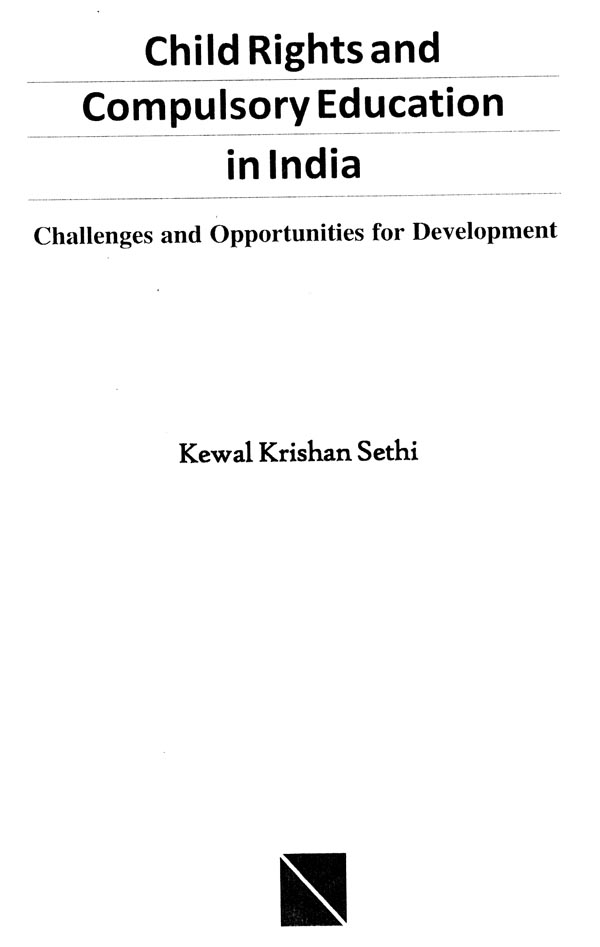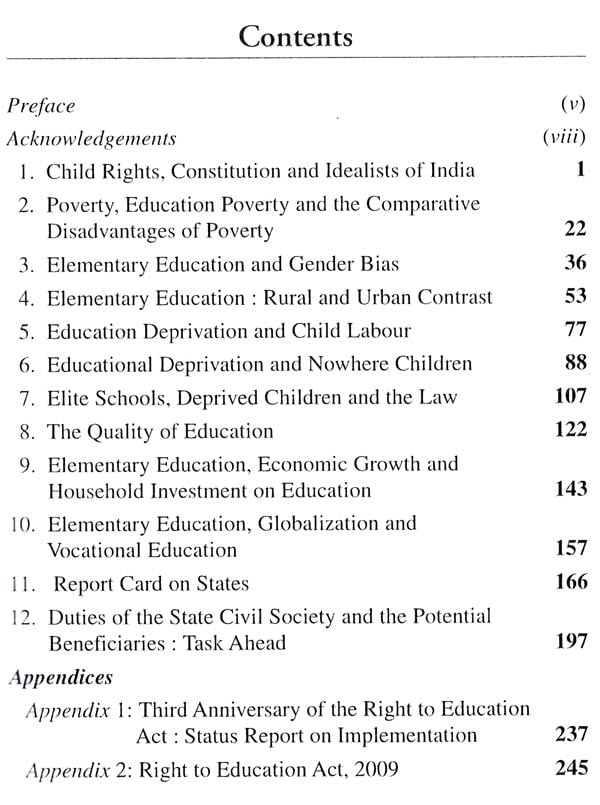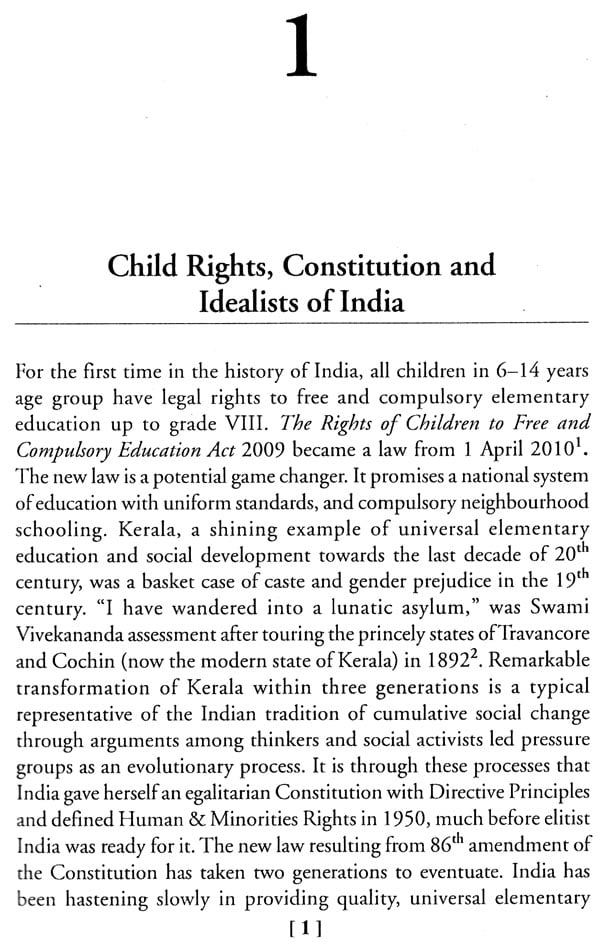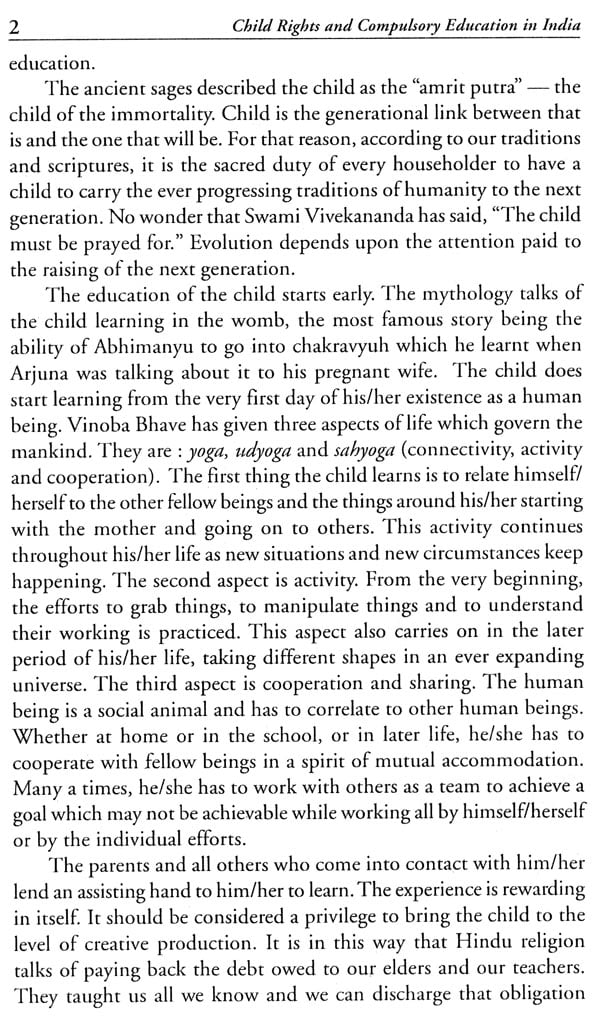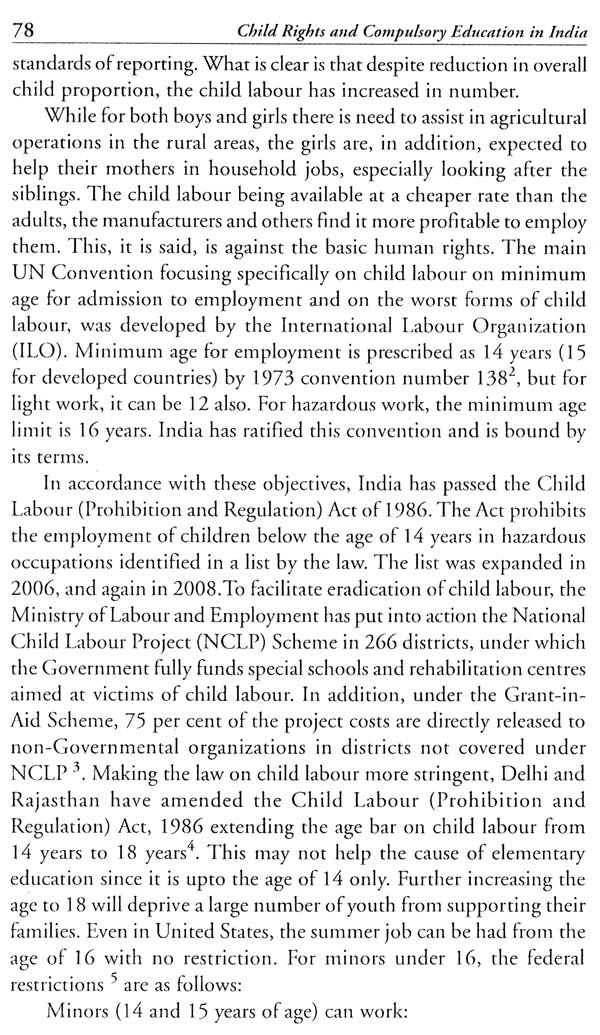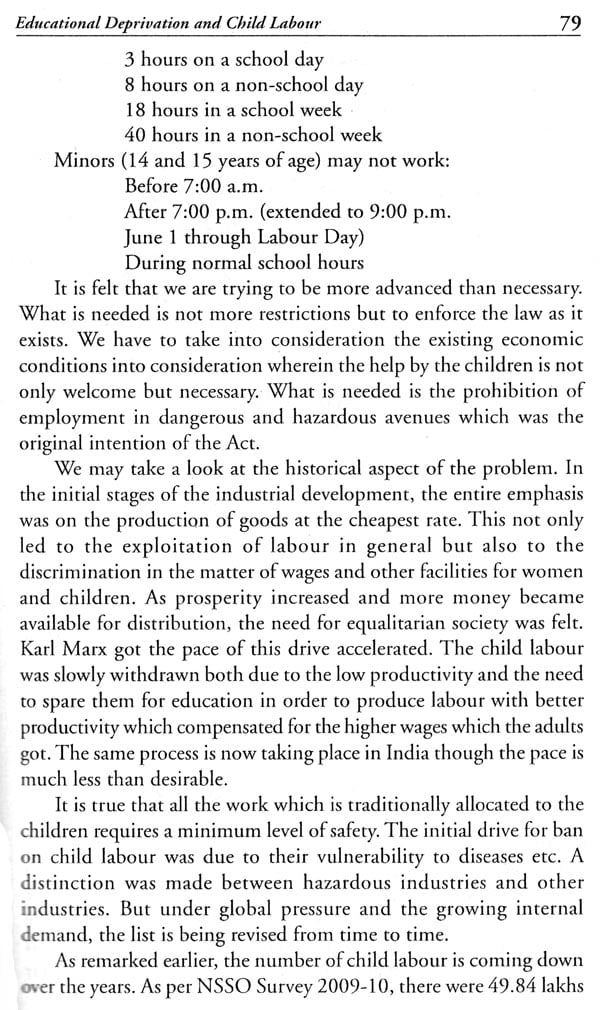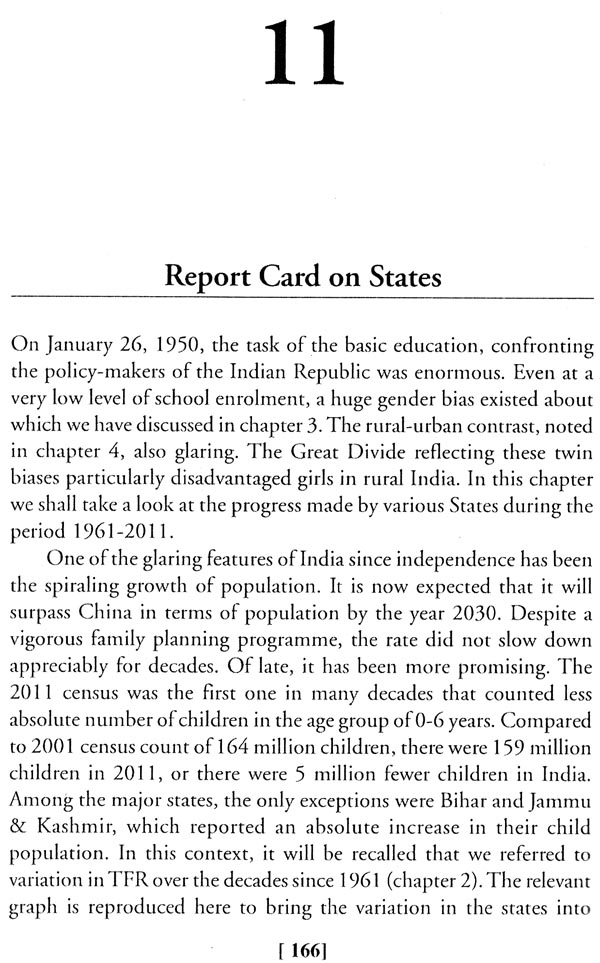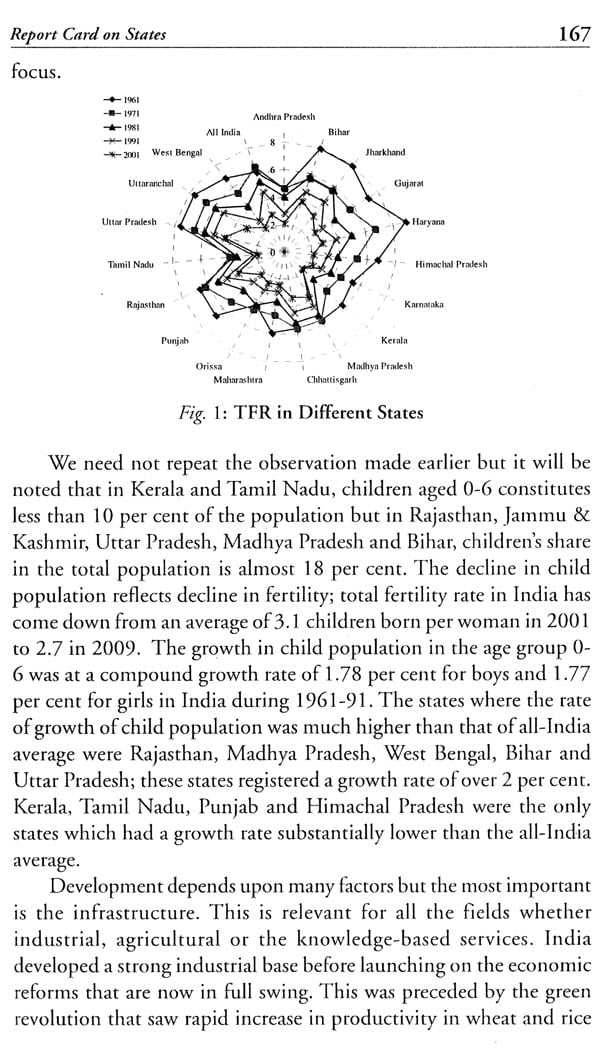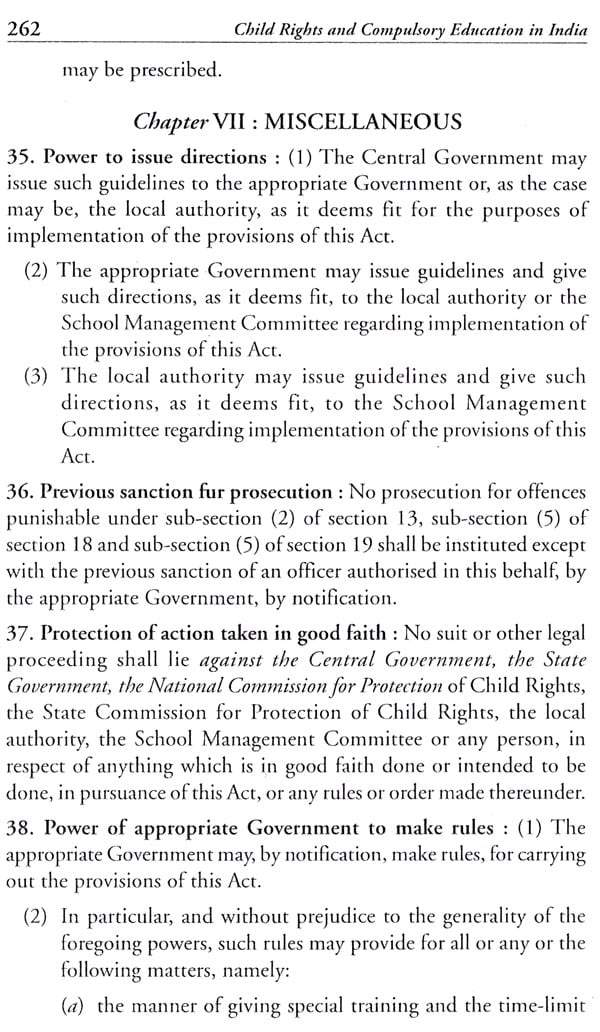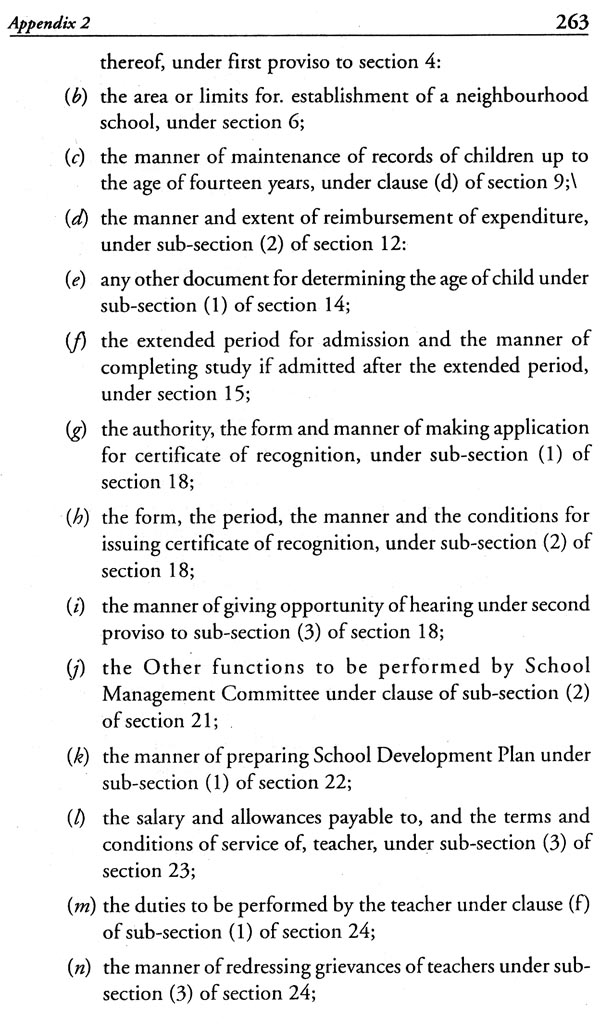
Child Right & Compulsory Educations in India
Book Specification
| Item Code: | NAT649 |
| Author: | Kawal krishan Sethi |
| Publisher: | National Publishing House |
| Language: | ENGLISH |
| Edition: | 2015 |
| ISBN: | 9788121407823 |
| Pages: | 266 |
| Cover: | HARDCOVER |
| Other Details | 9.00 X 6.00 inch |
| Weight | 440 gm |
Book Description
Education as an investment with a potential for creating huge benefits to the individual, family, community and the nation has been accepted in national as well as international thinking on development Strategy. It has now become a part of the received wisdom being propagated by the World Bank, UNDP and other development organizations. Accumulated, inconvertible evidence emphasizes that Basic Education is an investment in productivity and economic growth. Indian policy-makers while considering financial allocations to quality basic education need to be fully conscious of its productivity growth benefits.
The book provides a telescopic view of Our successes and failures in educating children of the Republic of India. Based on Indian idealist tradition and constitutional guarantees, it suggests the essential directional change needed to meet the challenge for a economically and morally strong India. The book is addressed to the policy-makers, community leaders and educationists of India.
He has been writing on various subjects after his retirement. His published works include a book 'Towards Total Planning’, and a novel 'Shikar aur Shikari’. Besides, his articles are published in various magazines and journals.
He is also associated with many organizations working in the field of education and administration and is the Chairman of its Madhya Pradesh and Chhattisgarh Regional Branch of Indian Institute of Public Administration.
The pace of change mandates that we produce a faster, smarter, better grade of human being. The evolution of education can be divided into three phases, each having its own merits and challenges. In the first phase, man sought to pass on his experiences and knowledge to the next generation. This process started with oral tradition, but writing systems had to be evolved as the volume of information grew. Still this was limited to a few. With the advent of the printing press, knowledge and information became available to the masses. Simultaneously, the oral tradition gave way to established institutions. Continous expansion of knowledge stressed the need for specialized agencies. The basic knowledge, which had to be shared by every one, needed one type of institutional arrangement, the advanced knowledge a different one. The approach, the methodolgy, the nature of material differed.
Every nation has followed this process but the results have been uneven. Some of the nations benefited from rapid expansion of educational system while others were thwarted, sometimes deliberately and sometimes by accident. With nations becoming masters of their own destinies, the pace has picked up. Where does India stand in the community of nations ? To say the least, the present situation leaves much to desire. We have the largest technical force and are able to compete with the best but we also have many who are unable or unwilling to benefit fom the educational facilities. We have missed some wonderful opportunities but we are standing at the threshold of a new one. This book attempts to analyze what has been the shortcomings and pitfalls which we could not avoid. It endeavours to look at various aspects of educational needs of the people.
In looking at the needs of the nation, we have to take cognizance of the fact that India has produced brilliant exponents of knowledge in every field. But even so, the end product does not give us that kind of aura which the country deserves. Why is it so ? We felt that our weakness is neglect of the foundations. To have a grand building, one has to ensure that it stands on solid ground. In the educational system, the elementary education is the bedrock on which the superstructure ‘s built. We have, therefore, chosen this as the field of our investigation.
Naturally, we have to build upon the structure we have and follow the ideals which we and our ‘ntellectual leaders have laid down for ourselves. Hence, the book starts with that aspect. We take a brief look at the progress of education and the path which our leaders showed us. The international scene has also been taken up for discussion. We have also discussed in brief the steps taken which have culminated in the adoption of the Right to Eduacation Act.
It has been repeatedly pleaded that poverty is the biggest stumbling block in formulating policies and programmes for mass education and total literacy. Our second chapter deals with this aspect in some detail. [he another hurdle is described as the demographic pressure, the ever increasing number of children who have to be catered to by the school system. This is also dealt with in this chapter.
We follow this up by looking at the various sections of the society which have problems of their own in keeping up with the mainstream. These are : the female sex, the rural population, and the child labour which are dealt with, in that order, in the next three chapters.
We note that the student enrolment is picking up but the dropouts are still around in alarming numbers. We take a look at the out of school children in this context in chapter six. The law promises to address the problems of children from the weaker sections and seeks the cooperation of the elite schools in this endeavour. Whether this is feasible is the subject matter of the next chapter.
Education should not be and cannot be a matter of enrolment and those who complete the course of studies. In other words, it is not merely the quantity that we seek but the quality. The quality of education, naturally, demands our attention and we devote considerable attention to it in exploring the present status and the procedures by which we can improve upon it.
Our country is a vast territory and we have a federal structure. Each region and each state has its own peculiar situation, culture, administrative structure and traditions. We cannot expect a uniform standard all over and so we take a look at what various states have achieved or are in the process of achieving. States' contrasts serve a purpose of learning from each other and we endeavour to do just that in the next chapter.
As we have said above, education is not an end in itself. It must lead to prosperity through better productivity and opportunities. It is the stepping stone to higher things in life. Real education should prepare us for the struggles which the life continuously presents. Ability to manage one’s future is a necessary ingredient of educational system. We examine whether our system does take care of it or, if it is lacking in this aspect, how to overcome the adverse situation.
And finally, we try to sneak a look into future to see what is in: store for us and what measures we should take to ensure that we are not in for surprises. How we can compete with the best and achieve the goals which our leading philosophers considered us fit for.
